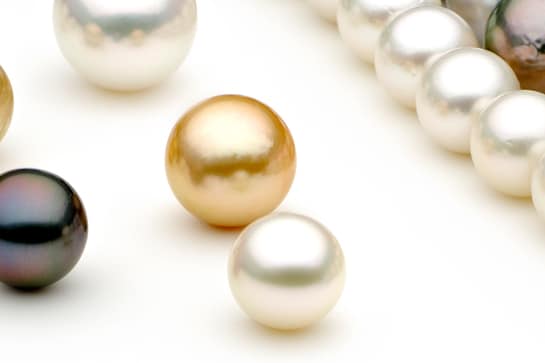Blog
Pearls are truly a treasure of the ocean. The only precious ‘gemstone’ formed from a living creature, pearls are as exquisite as they are captivating.
Buried inside a mollusc shell, deep below the ocean surface, pearls undergo a slow transformation from foreign particle to the centrepiece for timeless, inimitable jewellery.
Known for their versatility, each and every pearl is unique, and they have been prized throughout the generations for around 4,000 years.
Here’s a quick guide to what you ought to know about pearls.
They are a miracle of the ocean
The formation of a pearl is a fascinating process. Pearls begin life as a tiny speck – a foreign entity that finds its way into the shell of a mussel or oyster. The mantle, the organ that produces the shell, then creates nacre. This is a coating which lines the inside of the shell. When the foreign object, usually a wayward chunk of the mollusc’s food or a parasite, slips between the mantle and shell, the mantle covers the irritant in layers of nacre as a form of protection. This process continues for between two and seven years until a pearl is formed.
Naturally formed pearls are highly sought after, with most pearls now cultured with a little help from man. The foreign object, usually a piece of mollusc shell, is inserted into the oyster or mussel shell by hand.
Freshwater or saltwater?
There are two main types of pearl – freshwater and saltwater.
Freshwater pearls are cultivated from mussels in freshwater lakes, rivers and ponds predominately in China and Japan. Around 30 pearls can grow inside a single shell.
Saltwater pearls, come from oysters. One oyster will produce one pearl in general terms. Examples of saltwater pearls are White South Sea Pearls, Gold South Sea Pearls, Black Tahitian Pearls and Akoya Pearls. Saltwater pearls are considered more valuable than freshwater pearls due to their natural lustre and glossy look, larger size and infinity of shapes.
Some of the best pearls are found in Australia
Tucked away in a far corner of Northern Australia, the prized south sea pearl grows naturally within pinctada maxima, a large saltwater oyster inhabiting the warm waters of the region.
Due to the size of pinctada maxima, south sea pearls are usually large, yet the balmy waters in which they are produced result in a thicker layer of nacre, giving them an exceptionally lustrous radiance and making them some of the most sought-after pearls in the world.
Their colour depends on the mollusc and its environment
The type of mollusc, along with its geographical location, determines colour. The enchanting Tahitian pearl is black in colour, whereas freshwater pearls are formed in a spectrum of colours including pink, lilac, cream, grey and gold. Saltwater pearls are predominately white.
They’re not just round
No pearl is perfect, which only adds to the appeal and charm of this beautiful gem. Saltwater pearls are usually almost perfectly round, making them the most rare and valuable pearls. Freshwater pearls come in myriad shapes, including round, button, oval, pear and baroque.
At Volle Jewellery, we are experts in all types of pearls. If you’re in the market for something as equally enchanting as a pearl, Volle Jewellery is also the home of the Australian pink diamond. In addition, we take immense pride in our stunning collection of Australian opals, so if you’re looking for an opal store in Sydney, come and visit, and let us design your next exquisite piece of jewellery.

